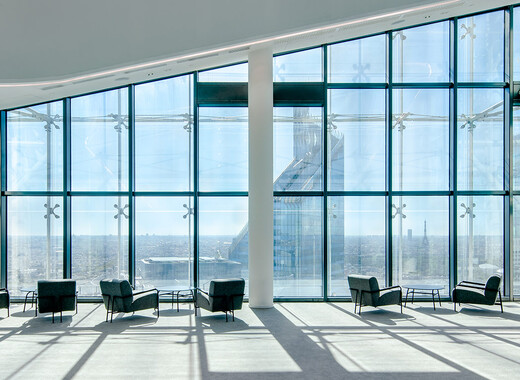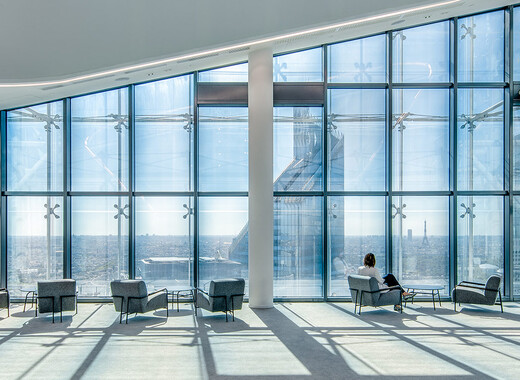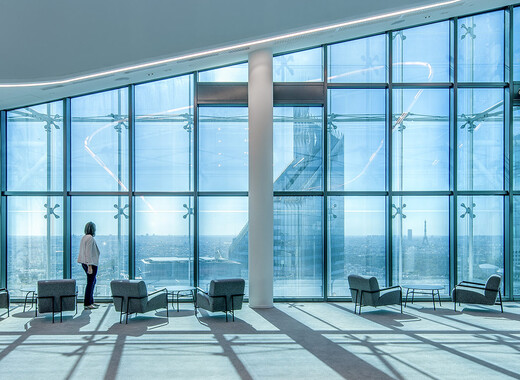HOW ELECTROCHROMIC GLASS WORKS
The Science Behind SageGlass
SageGlass electrochromic glass goes by many names, including dynamic glass, dynamic glazing, and smart glass. There are different types of smart glass. Here’s how ours works.
How Electrochromic Glass Works
The Intelligence of Smart Glass
To perform in the field, electrochromic glass needs software and controls to dictate when and how it should tint. Using a combination of predictive and real-time inputs such as weather, location and cloud cover, the software and controls manage daylighting, glare, energy use and color rendition throughout the day.
Benefits of Electrochromic Glass
Benefits of Electrochromic GlassOccupant Wellness
Electrochromic glass can be part of a healthy building strategy by providing all-day access to daylight and views without glare or excessive heat.
Sustainability
By optimizing heat transfer, smart glass can lessen the load on your HVAC systems and reduce your energy bills.
Distinctive Design
Electrochromic glass allows you to have greater expanses of glass facades without the need for excessive shading devices, resulting in a clean, modern aesthetic.
Proven Technology
SageGlass smart glass has been used successfully in thousands of projects across several continents.
How to Evaluate the Right Electrochromic Glass Partner
When evaluating electrochromic glass partners, consider aesthetics, experience, stability, and quality.
Talk to a representative to learn more about the distinction SageGlass delivers.
- Superior Aesthetics
- Relevant References
- Stable Organization
- Quality Product & Support
- Advanced Software & Controls
- Easy System Integration







